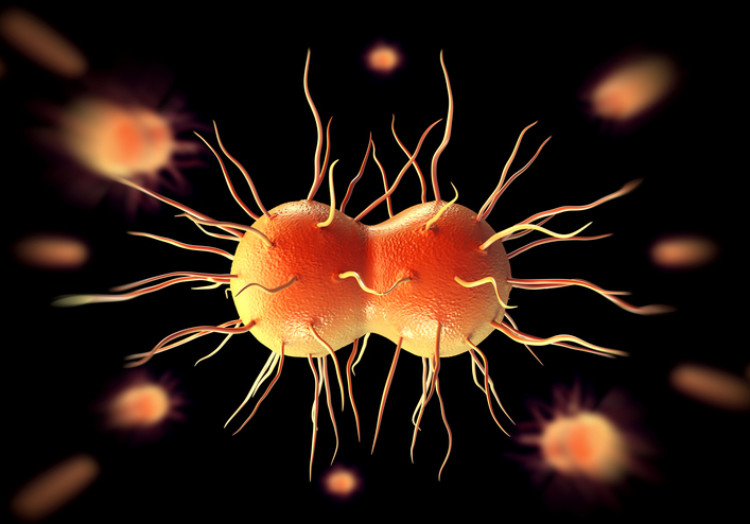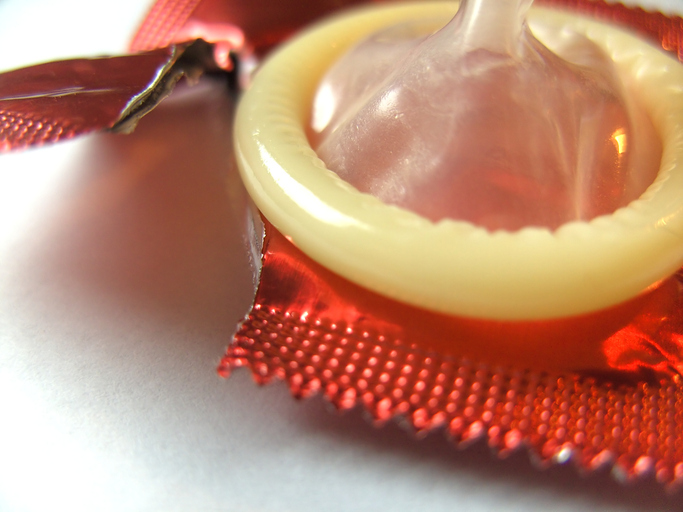- epis.sk - information about gonorrhoea from EPIS
- old.hpl.sk - information about the disease
- cdc.gov - Gonorrhea - CDC Fact Sheet
- plannedparenthood.org - Gonorrhea
- nhs.uk - Gonorrhoea
How is gonorrhea transmitted? Symptoms in women and men differ

Gonorrhoea is a highly contagious sexually transmitted disease. Transmission occurs through sexual contact. Moreover, infection is not only through vaginal contact, but also through anal or oral contact. Whether non-sexual transmission is possible is discussed in the article.
Article content
Gonorrhea is a sexually transmitted disease.
It is caused by a gram-negative diplococcus, the gonococcus Neisseria gonorrhoeae.
From the Greek gonos (seed) and rhoia (flow). Indicates that fluid is coming out of the penis

It is one of the most common sexually transmitted diseases. The highest incidence is among young sexually active people. Frequent change of sexual partners, promiscuity or homosexuality contribute to its spread.
TIP: For more information, see our article on gonorrhoea.
Do you know what you are at risk of when you change sexual partners?
We have interesting information in this magazine article.
Men get gonorrhea differently than women
The disease manifests itself after an incubation period. This varies between the sexes. In men, the incubation period is approximately 2-5 days. In women, it can be extended to 2 weeks.
However, in the case of the female sex, 50-75% of cases of asymptomatic gonorrhoea occur.
In males, the percentage of asymptomatic gonorrhoea is lower, at approximately 10% of cases.
The table shows how gonorrhoea differs between women and men
| Manifestations of gonorrhoea in women | Manifestations of gonorrhoea in men |
| 50-75 % asymptomatic | 10% have no symptoms |
| Vaginal discharge, mucoid to purulent | yellow-white discharge from the urethra |
| foul-smelling discharge | foul-smelling discharge |
| redness and swelling of the urethral orifice | redness and swelling of the urethral orifice |
| painful urination, burning or cutting | burning and cutting when urinating |
| purulent discharge from the urethra | frequent urge to urinate |
| pain in the lower abdomen | inability to hold urine |
| pain during sexual intercourse | pain, tension in the testicles |
| vaginal bleeding outside the cycle |

Gonorrhoea is easily treated with antibiotics.
If treatment is neglected, it spreads further.
Subsequently, general symptoms such as nausea or vomiting and an increase in body temperature to fever may also be associated.
Complications of untreated gonorrhoea in women include inflammation of the uterus, fallopian tubes or ovaries, which can result in adhesions and obstruction of the fallopian tubes.
This results in infertility or inability to bear a fetus. Ectopic pregnancy is also a risk. Chronic inflammation in the small pelvis is therefore serious.
If infected during pregnancy, the risk of premature termination of pregnancy by birth or miscarriage increases. In the case of ongoing gonorrhoea, the risk of transmission to the newborn at birth is high.
Neonatal gonorrhoea causes inflammation of the conjunctiva, also known as gonorrhoeal conjunctivitis, which is characterised by a purulent discharge in the eye area and also by swelling in the eye area. The most serious complications in this period include visual impairment and even blindness.
Even in men, neglected treatment is the reason for complications, even later, such as infertility. In the first place, of course, the bacteria spread to the prostate and epididymis.
With prostatitis, there is pain when urinating, but also when passing stool. Painful erections and ejaculation of semen or spontaneous discharge during the night are present. Inflamed epididymis are swollen and painful.
Gonorrhoea is also dangerous because of the threat of spreading the bacteria through the blood. This allows the infection to spread to the joints, tendons, ligaments and also to the skin. It manifests itself with fever, joint inflammation and bleeding skin rashes over the body.
Complications of gonorrhoea include mainly inflammation:
- rectum
- throat
- conjunctivitis, blindness
- skin
- joints, tendons
- tonsils (cervical tonsils)
- sepsis, known as blood poisoning
- meningitis (inflammation of the meninges)
- endocarditis (inflammation of the inner membranes of the heart)
What ensures the spread of gonorrhea?

The gonococcus inhabits areas of the body - mainly the vagina and cervix in women, and the urethra in men. In this environment, it is provided with suitable conditions for life and reproduction.
It is very sensitive to changes in temperature and humidity. Outside the body, it dries out quickly and therefore perishes.
Gonorrhoea is a disease that only occurs in humans. It is also only transmitted between humans.
Gonococci do not occur freely in nature. Their sensitivity to the external environment predetermines their mode of transmission.
Sexual transmission of gonorrhoea
Transmission of gonorrhoea occurs preferably during sexual intercourse, which can be vaginal, but also anal or oral intercourse.
Transmission and manifestations of gonorrhoea outside the genital tract
In genital transmission, gonorrhoea manifests itself with the symptoms listed in the table above. However, if transmission occurs during anal intercourse, rectal inflammation occurs. This may be manifested by itching of the anal area, but also by pain. The pain is aggravated by defecation.
Oral intercourse causes infection of the mucous membranes in the oral cavity. Here gonorrhoea mimics tonsillitis or other inflammation of the throat. There is sore throat, irritated, red mucous membranes.
Transmission of the infection can also take place in the eye, and therefore in the conjunctiva.
The main reason for this is poor hygiene and the clogging of bacteria with infected fingers. In this case, purulent conjunctivitis, discharge from the eye, but also pain in the eye and swelling in the area around the eye causes.
A serious complication is an ulcer of the cornea, its damage and subsequent blindness. The transmission of the disease from mother to child during childbirth is mainly characterized by the appearance of neonatal conjunctivitis.
How is gonorrhoea spread?
Transmission occurs from infected mucous membranes through bodily fluids. Although gonorrhoea is highly infectious, the sensitivity of the bacteria to the external environment limits its mode of transmission, and therefore gonorrhoea is transmitted exclusively through sexual contact.
It is estimated that up to 25 million people worldwide contract gonorrhoea each year.
Transmission is therefore most common during sexual intercourse, but infection also occurs during extra-genital practices, including various anal or oral variations.
In rare cases, if suitable transmission conditions are provided, and especially immediate use, transmission can also occur through infected underwear, towels or soiled fingers.
Mode of transmission of gonorrhoea:
- by sexual contact through genital intercourse
- through sexual intercourse outside the genital area, namely anal and oral
- by contaminated infected fingers (rarely by towel, underwear)
- lack of hygiene, transmission to the conjunctiva of the eye
- during delivery from mother to child
How can one protect against gonorrhoea?
Gonorrhoea does not leave a lasting immune resistance. Thus, repeated infections occur. There is no vaccination for gonorrhoea. Young people in adolescence to adulthood are most at risk.
The period from 15 to 29 years of age is the most risky.
The holiday season is dangerous, especially summer. Various mass, social events, festivals. Combinations of alcohol, drugs and casual sexual contact.
Risk: Sexturism or a promiscuous lifestyle. Ignorance of a new partner's sex life is also a risk.
Of course, infidelity, and therefore the changing of sexual partners of one of the long-term partners. In this case, it is not valid if the claim of acquiring the disease is accompanied by the remark that the infection occurred in public toilets.
If gonorrhoea is present, it is advisable to test for other sexually transmitted diseases, such as syphilis, chlamydia or HIV.

The principles for protecting the transmission of gonorrhoea are:
- monogamous living
- knowledge of the new partner's sex life
- if necessary, STD testing before sexual intercourse
- barrier contraception, condoms
- for newborns at risk, preventive treatment immediately after birth
- sexual abstinence in case of ongoing illness
- treatment of both sexual partners
Diagnosis and treatment of gonorrhoea
In the case of specific symptoms and general discomfort after unprotected sexual intercourse, examination is important. The medical history, information on unprotected sexual intercourse and the clinical picture, i.e. the symptoms, are evaluated.
Laboratory examinations include a culture of the urethral discharge in the male. In the female, a cervical smear and a urethral smear are performed.
All sexual partners should undergo the examination, including treatment after a positive result. This is important to prevent further spread of the infection, which means sexual abstinence.
Gonorrhoea is treated with antibiotics, and this is done after testing the sensitivity of the bacteria to antibiotics.
In the past, cases of resistant bacterial strains have been reported worldwide. In June 2012, the World Health Organization issued a report on the emergence of gonococci resistant to cephalosporin III antibiotics. This report covered countries such as Sweden, Norway, the United Kingdom, Japan and Australia.
Gonorrhoea cannot be treated with home prescriptions or arbitrary antibiotic use. If treatment is neglected, chronic infection occurs. Its complications are inflammation and transmission of the bacteria to other parts of the body.
Video about gonorrhoea
Interesting resources










